What Is a Certificate of Origin, and Why Is It Crucial for Shipping Tech
Few documents carry as much regulatory weight when it comes to importing and exporting as the Certificate of Origin (CO). Whether you’re exporting semiconductor chips, smart devices, or industrial servers, this document can make or break your shipment’s success across borders.
The Certificate of Origin is essential for determining tariff rates and preventing illegal practices like origin washing, especially in the tech sector, where supply chains span continents and regulatory scrutiny is high.
What Is a Certificate of Origin?
A Certificate of Origin is an official document that certifies where your goods were produced, manufactured, or processed. It’s not just a formality; it’s a cornerstone of customs compliance. Certificates of Origin are used to:
- Validate the country of origin for imported/exported goods.
- Support eligibility for reduced or eliminated tariffs under trade agreements like Free Trade Agreements (FTAs) or the Economic Partnership Agreement (EPA).
- Assist customs authorities in applying the correct duty rates.
- Enforce sanctions, embargoes, and ethical trade standards.
Although exporters often note the country of origin on commercial invoices, many countries require a standalone, certified CO signed by a local chamber of commerce or government agency.
Want to learn more about which import documents you need for your next shipment?
Why Certificates of Origin Matter in Tech Shipments
The tech industry’s globalized supply chains add unique layers of complexity to origin documentation. Components are often sourced from multiple countries and assembled in another, making it crucial to document where the final product was “substantially transformed.”
Here’s why a Certificate of Origin is especially critical when shipping technology products:
Rules of Origin vs. Certificate of Origin | What’s the Difference?
While they sound similar, rules of origin and certificates of origin serve different but complementary purposes:
Rules of Origin are the criteria customs use to determine where a product “originates.”
The Certificate of Origin is the document that certifies the product meets those criteria.
In other words, rules of origin define the standards, and the CO proves your goods comply.
Transshipment and the Certificate of Origin
Transshipment occurs when goods are temporarily moved through an intermediate country en route to their final destination. This doesn’t change the country of origin, which must still reflect the location of manufacturing or significant transformation.
This distinction is vital when determining eligibility under FTAs and avoiding mislabeling or accidental origin washing.
Types of Certificates of Origin
There are two primary types of COs you may need:
Non-Preferential Certificate of Origin
Used when your product does not qualify for tariff benefits. It’s still required to validate the country of origin, particularly when shipping restrictions or trade remedies (like anti-dumping duties) apply.
Preferential Certificate of Origin
Used when your goods do qualify under an FTA or similar agreement, such as:
- USMCA (US–Mexico–Canada Agreement)
- EU-Japan Economic Partnership Agreement
- Generalized System of Preferences (GSP)
These certificates help reduce or eliminate tariffs when the criteria under the trade agreement are met.
Exporters may need to coordinate with their chamber of commerce or another authorized body to issue or verify the CO. Electronic COs are increasingly common and accepted by customs authorities globally.
Not sure if your goods qualify under an FTA?
Certificate of Origin and Tariff Associations
Many governments tie tariff rates directly to the CO. Depending on the country of origin and whether there’s a trade agreement in place, your product may:
- Qualify for a preferential rate
- Be subject to standard tariffs
- Be prohibited under sanctions or embargoes
Failure to declare the true origin can lead to tariff back-payments, legal penalties, and reputational damage. For tech companies that operate on slim margins and tight timelines, this risk is simply too great to ignore.
Get Certificates of Origin Right the First Time
Failing to meet CO requirements can delay shipments, incur penalties, or result in your goods being rejected by customs. With in-country expertise in over 200 territories, we have streamlined processes in place to mitigate the risks associated with customs clearance.
If you’re in the business of shipping technology products across borders, don’t underestimate the role of a Certificate of Origin. It’s more than just a compliance document, it’s a gateway to smoother logistics, lower tariffs, and better trade relationships.
NB! Double-check your Certificate of Origin. Work with verified issuing bodies. Know your rules of origin.
And always verify that your shipment won’t be flagged for origin-related issues like transshipment or mislabeling.
Need help navigating Certificate of Origin requirements for your next tech shipment? Explore our full import/export solutions or reach out for guidance on trade compliance and tariff navigation.
.png)


